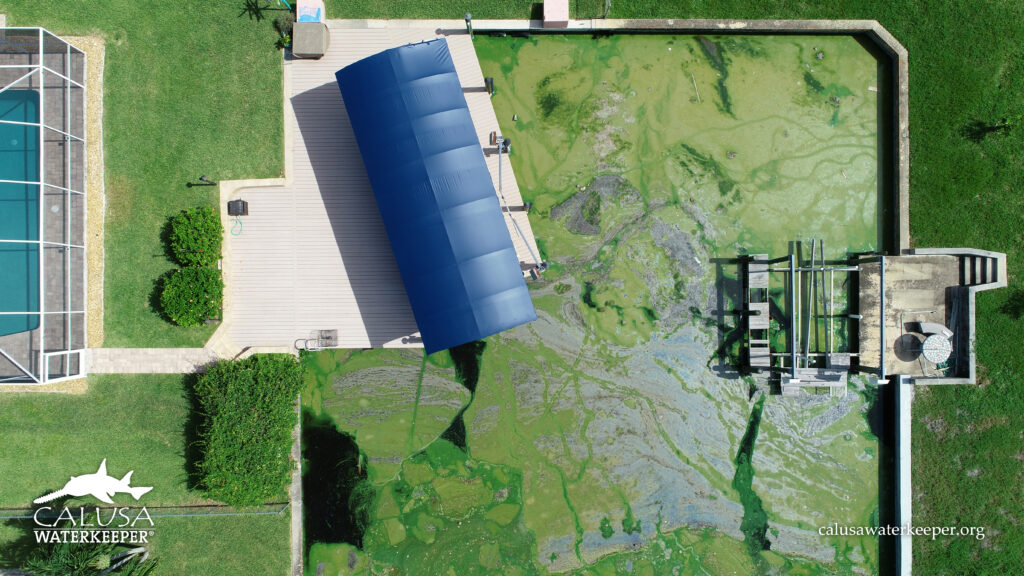By Mary Kay Robbins-Kralapp and Howard Simon
In southwest Florida, where the Caloosahatchee River empties into Pine Island Sound and ultimately the Gulf of Mexico, three citizen advocates for clean water are facing crippling retaliatory financial penalties from their local government.
For Dan Carney, Jim Collier and Kevin Sparks, being able to cast a line in the waters off Cape Coral is what brought them to buy a home and relocate to the community.
“Access to world-class fishing and the environment that supports it,” Dan Carney told the City Council is what motivated him to move to Cape Coral. Jim Collier told the Council that he and his wife Cheryl “… have a 20-year history in Cape Coral supporting wildlife and water quality.” Cheryl runs the Butterfly House at Rotary Park; Jim was chairperson of the Waterway Advisory Board. Kevin Sparks noted that he is also “a lifelong fisherman. Fishing is what brought me to Cape Coral.”
The three joined with the Matlacha Civic Association, Calusa Waterkeeper and the Sanibel-Captiva Conservation Foundation to challenge the removal of the Chiquita Lock on the Caloosahatchee.
The Lock was designed to force water from a portion of the city’s canals to be filtered first through mangroves before reaching the Caloosahatchee, Pine Island Sound, Matlacha Pass, around Sanibel Island and into the Gulf.

The city has been trying to remove the Lock for years. It was never clear whether the city was responding to anything more than boaters who had to suffer the inconvenience of waiting to pass through the lock, slowing their access to open waters. Ironically, the city’s chronic neglect and failure to maintain (or upgrade) the Lock made it less effective for both navigation and environmental protection.
The effort to secure a permit from the Department of Environmental Protection to remove the lock, in place since the 1980s, was denied in 2019 by an administrative law judge who ruled that the permit did not comply with permitting criteria, “particularly compliance with state surface water quality standards.”
The city lost due to concerns about how the removal of the Lock would impact nutrient loading (thousands of pounds of nitrogen), saltwater intrusion, groundwater levels, the mangroves that protect homes from storm surge in hurricanes and further exposure to discharges from Lake Okeechobee that carry toxic blue-green algae down the Caloosahatchee and feed red tide in the Gulf. These concerns remain today.
The city renewed its attempt to secure a permit from the DEP to remove the lock, this time employing the law firm of Lewis, Longman & Walker, P.A., who maneuvered to keep the local environmental groups out of the case, so the fishermen were the only petitioners opposing the city’s application.
This time, after numerous depositions and lengthy hearings, the city prevailed – the ALJ ruled that the DEP could issue a permit for the removal of the Lock.
Now the city and their high-priced law firm are seeking to impose the cost of the litigation, including the law firm’s fees, on the three fishermen, claiming that their efforts to protect southwest Florida waterways was brought for an “improper purpose” and was frivolous.
It is no secret that Florida has a serious water quality problem impacting public health. The state has been hit more than once by the toxic vise of both blue-green algae and red tide. Gov. Ron DeSantis acknowledged the problem by appointing a task force to provide recommendations for “expediting improvements and restoration of Florida’s water bodies that have been adversely affected by blue-green algae blooms.”

In a state with lax anti-pollution enforcement and where developers control so many city and county commissions, Florida needs volunteer advocates to test and monitor waterways where the state does not.
The three anglers who challenged Cape Coral’s effort to remove the Chiquita Lock are the kind of environmental advocates whose courage to take on city hall should be honored. (One of the fishermen, Dan Carney, was recently named Non-Profit Volunteer of the Year by the Cape Coral Community Foundation.) Their efforts to protect safe and clean water were anything but “improper.”
As brutal as the $2 million penalty to cover a big law firm’s bill would be for the three fishermen and their families, it would be regrettable if the tactic of imposing devastating costs intimidated others from working to save what is left of our over-developed peninsula.
A Go Fund Me account – https://www.gofundme.com/f/defend-dan-carneys-environmental-efforts – has been set up by friends of the fishermen in case the new Cape Coral City Council does not reverse the effort by its lawyers to pursue the crippling financial penalties.
Mary Kay Robbins-Kralapp is a member of the board of directors of Calusa Waterkeeper. Howard Simon is a member of the Calusa Waterkeeper Advisory Board. Banner image: Southwest Cape Coral with the Chiquita Lock in the foreground (Photo by Ralph Arwood/Calusa Waterkeeper).
Sign up for The Invading Sea newsletter by visiting here. To support The Invading Sea, click here to make a donation. If you are interested in submitting an opinion piece to The Invading Sea, email Editor Nathan Crabbe at ncrabbe@fau.edu. To learn more about harmful algal blooms, watch the video below.



